
Thomas Jonathan "Stonewall" Jackson served as a Confederate general (1861–1863) during the American Civil War, and became one of the best-known Confederate commanders after General Robert E. Lee. Jackson played a prominent role in nearly all military engagements in the Eastern Theater of the war until his death, and had a key part in winning many significant battles.
Stonewall or Stone wall may refer to:
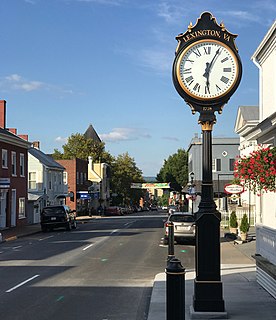
Lexington is an independent city in the Commonwealth of Virginia in the United States. At the 2010 census, the population was 7,042. It is the county seat of Rockbridge County, although the two are separate jurisdictions. The Bureau of Economic Analysis combines the city of Lexington with Rockbridge County for statistical purposes. Lexington is about 57 miles (92 km) east of the West Virginia border and is about 50 miles (80 km) north of Roanoke, Virginia. It was first settled in 1778.
Scouting in Virginia has a long history, from the 1910s to the present day, serving thousands of youth in programs that suit the environment in which they live. Many of the local groups and districts took names of historic Virginia Indian tribes in the state.

Scouting in West Virginia has a long history, from the 1910s to the present day, serving thousands of youth in programs that suit the environment in which they live.

The First Battle of Kernstown was fought on March 23, 1862, in Frederick County and Winchester, Virginia, the opening battle of Confederate Maj. Gen. Thomas J. "Stonewall" Jackson's campaign through the Shenandoah Valley during the American Civil War.
The Battle of McDowell, also known as the Battle of Sitlington's Hill, was fought on May 8, 1862, near McDowell, Virginia, as part of Confederate Major General Stonewall Jackson's 1862 Shenandoah Valley campaign during the American Civil War. After suffering a tactical defeat at the First Battle of Kernstown, Jackson withdrew to the southern Shenandoah Valley. Union forces commanded by Brigadier Generals Robert Milroy and Robert C. Schenck were advancing from what is now West Virginia towards the Shenandoah Valley. After being reinforced by troops commanded by Brigadier General Edward Johnson, Jackson advanced towards Milroy and Schenck's encampment at McDowell. Jackson quickly took the prominent heights of Sitlington's Hill, and Union attempts to recapture the hill failed. The Union forces retreated that night, and Jackson pursued, only to return to McDowell on 13 May. After McDowell, Jackson defeated Union forces at several other battles during his Valley campaign.
The Battle of Port Republic was fought on June 9, 1862, in Rockingham County, Virginia, as part of Confederate Army Maj. Gen. Thomas J. "Stonewall" Jackson's campaign through the Shenandoah Valley during the American Civil War. Port Republic was a fierce contest between two equally determined foes and was the most costly battle fought by Jackson's Army of the Valley during its campaign. Together, the battles of Cross Keys and Port Republic were the decisive victories in Jackson's Valley Campaign, forcing the Union armies to retreat and leaving Jackson free to reinforce Gen. Robert E. Lee for the Seven Days Battles outside Richmond, Virginia.

The Battle of Cedar Mountain, also known as Slaughter's Mountain or Cedar Run, took place on August 9, 1862, in Culpeper County, Virginia, as part of the American Civil War. Union forces under Maj. Gen. Nathaniel P. Banks attacked Confederate forces under Maj. Gen. Thomas J. "Stonewall" Jackson near Cedar Mountain as the Confederates marched on Culpeper Court House to forestall a Union advance into central Virginia. After nearly being driven from the field in the early part of the battle, a Confederate counterattack broke the Union lines resulting in a Confederate victory. The battle was the first combat of the Northern Virginia campaign.
The Stonewall Brigade of the Confederate Army during the American Civil War, was a famous combat unit in United States military history. It was trained and first led by General Thomas J. "Stonewall" Jackson, a professor from Virginia Military Institute (VMI). His severe training program and ascetic standards of military discipline turned enthusiastic but raw recruits into an effective military organization, which distinguished itself from the First Battle of Bull Run in 1861 to Spotsylvania Court House in 1864. Its legacy lives on in the 116th Infantry Brigade, which bears the unofficial nickname "Stonewall Brigade," and in several living history reenactment groups.

The West Fork River is a principal tributary of the Monongahela River, 103-mile (166 km) long, in north-central West Virginia, United States. Via the Monongahela and Ohio Rivers, it is part of the watershed of the Mississippi River, draining an area of 881 square miles (2,284 km²) on the unglaciated portion of the Allegheny Plateau.

Georgetown is an unincorporated community in Lewis County, West Virginia, United States. It is adjacent to Stonewall Resort State Park.
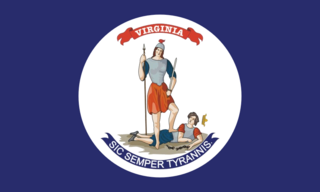
The 33rd Virginia Infantry Regiment was an infantry regiment raised in the Commonwealth of Virginia for service in the Confederate States Army during the American Civil War. It was a part of the famed "Stonewall Brigade," named for General Stonewall Jackson.
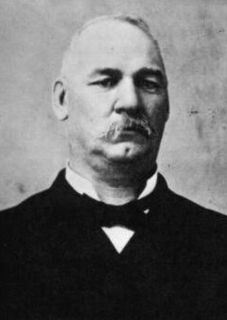
James Alexander Walker was a Virginia lawyer, politician, and Confederate general during the American Civil War, later serving as a United States Congressman for two terms. He earned the nickname "Stonewall Jim" for his days as commander of the famed Stonewall Brigade.
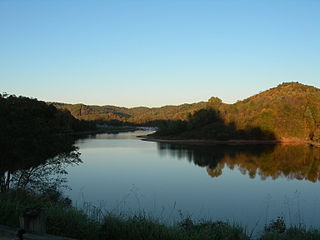
Stonewall Jackson Lake is an 2,630-acre (10.6 km2) impoundment on the West Fork River in Lewis County, West Virginia. The lake is a flood control project of the Pittsburgh District of the United States Army Corps of Engineers and named for Thomas "Stonewall" Jackson, a native of Lewis County. Stonewall Resort is located along the lake's shore. Facilities provided by the Corps of Engineers included a visitors center with public restrooms, a hiking trail, and fishing access.

Stonewall Jackson Lake State Park is a state park along the shores of Stonewall Jackson Lake, an impoundment on the West Fork River in the U.S. state of West Virginia. The lake is a project of the United States Army Corps of Engineers. The original park was completed in 1990 and consisted of a campground, marina, multi-purpose building, and park offices. The revenues generated from park activities were not able to support the debt from construction activities. Senator Robert C. Byrd developed a legislation that meant the State would not have to pay the Corps the $28 million debt if improvements to the State Park exceeded $28 million.
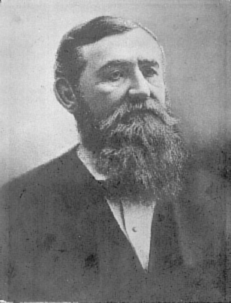
Jacob Beeson Jackson was the sixth Governor of West Virginia from 1881 to 1885. In 1855, he married Maria Willard. In his biography it is stated that he was a cousin of Stonewall Jackson. An examination of their family trees shows that the two men were second cousins once removed. He was also a 4th-cousin-once-removed to William Wirt Woodson who was Stonewall Jackson's half brother.
The Romney Expedition was a military expedition of the Confederate States Army during the early part of the American Civil War. It is named for Romney, West Virginia, which at the time was still in the state of Virginia. The expedition was conducted in this locale from January 1 to January 24, 1862, as part of the preliminary actions of Stonewall Jackson's Valley Campaign. Confederate forces under Major General Thomas J. "Stonewall" Jackson cleared Union forces under Major General Nathaniel Banks and Brigadier General William S. Rosecrans from the lower Shenandoah Valley and surrounding Allegheny ranges, and then successfully severed the Baltimore and Ohio Railroad and the Chesapeake and Ohio Canal.
Stonewall Jackson High School was a high school in Kanawha County, West Virginia. It opened in 1940 and closed in 1989. It was located on the West Side in Charleston, West Virginia. In 1989, Stonewall Jackson High School and Charleston High School consolidated to become Capital High School. The building is now a middle school.

William Lowther Jackson Jr. was an Virginia lawyer, Democratic politician, slaveholder and jurist who became the Lieutenant Governor of Virginia prior to the American Civil War, and later fought in the Confederate States Army, rising from his initial rank of private to General.














